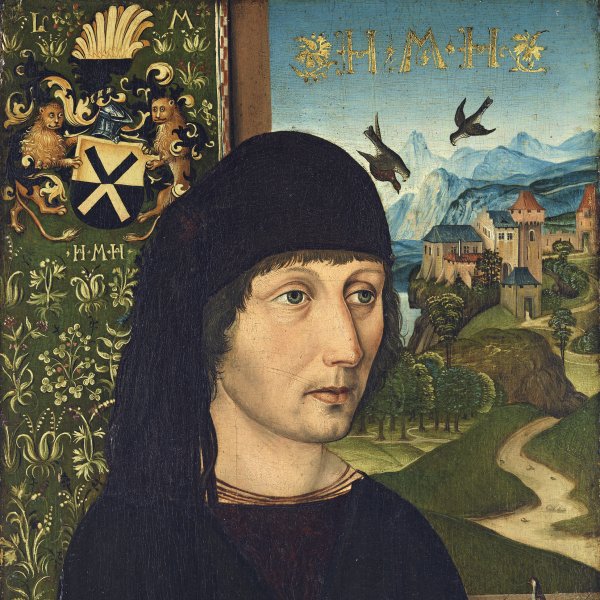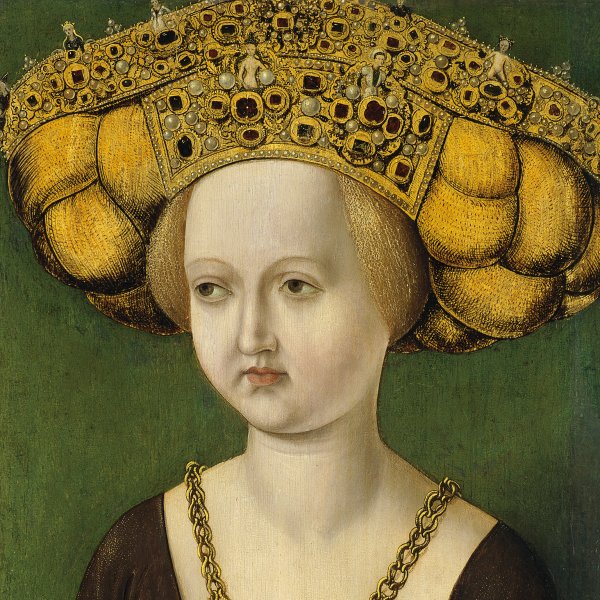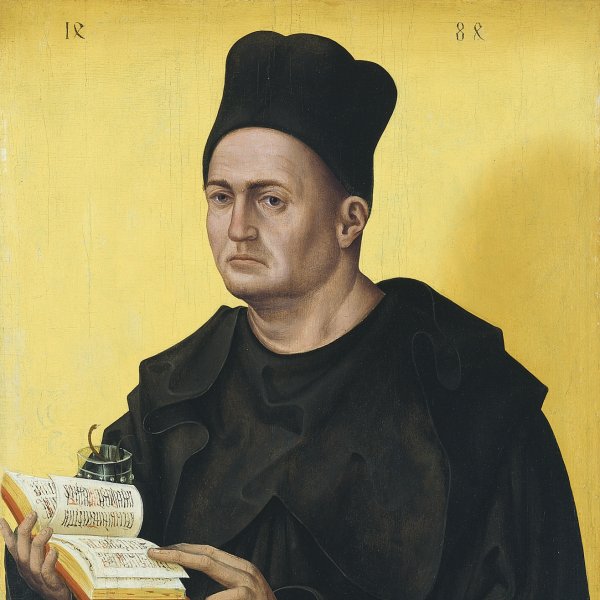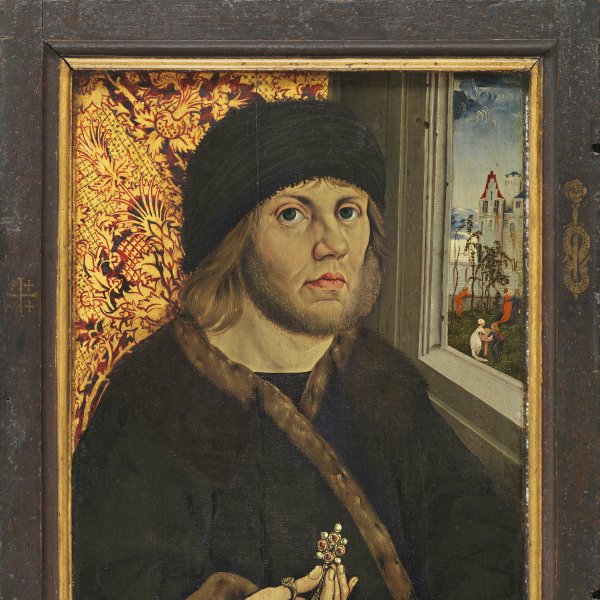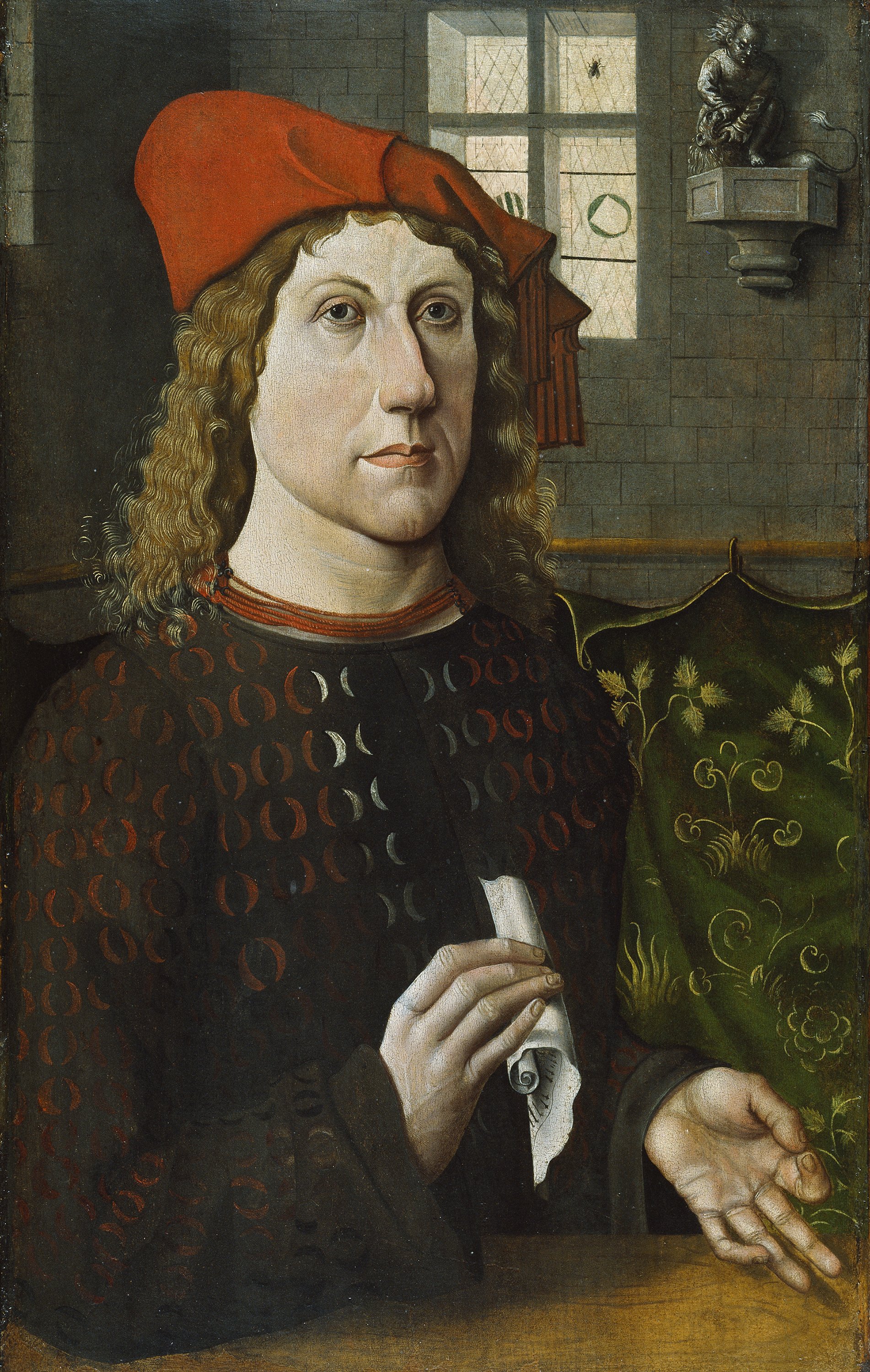Portrait of a Young Man
This anonymous painter of German origin, known as the Master of the Lüneburg Last Judgment, was active in the second half of the 15th century. His name derives from a group of frescoes by his hand in the Town Hall of that city. The symbolism of this portrait makes it one of the most interesting in the Collection. The unidentified young man is posed half-length, holding a small parchment in one hand that may be a musical score. With his other hand he seems to be holding one of the flowers embroidered on the green curtain that divides the room in two. In the background is a stone wall of regular blocks and three elements that, together with the flower, may hold the key to the sitter’s identity. The first two elements are the unidentified coats-of-arms in the window, while the third is a sculpture of Samson wrestling with the lion, which is a prefiguration of the victory of Christ over the devil. A curious detail is the fly painted in the upper part of the window.
NR
The setting in which the sitter is located is among the most interesting to be seen in any of the Museum’s paintings. The young man, whose identity is unknown, is presented half-length in a simple interior. Located in front of a tabletop of which even the veins in the wood are visible, his position would have related to and interacted with the painting’s original frame. He holds a small piece of parchment which has tentatively been suggested to be a piece of music, while with his left hand he makes a rhetorical gesture, seemingly grasping a sprig of flowers from the printed textile behind him that functions to divide the room. The background corner in which the figure is set has a wall of plain masonry against which three elements are deliberately emphasised. The first two are to be found in the leaded window: the two coats-of-arms in the centre of the pane and a large fly. The third is a small sculpture on a plinth depicting Samson fighting with the lion. These details, as well as other carefully considered elements introduced by the artist, such as the piece of cloth hanging down from its supporting bar, the gesture of his hand and the parchment that the sitter holds are all intended to indicate his identity. The scene of Samson forcing open the lion’s jaws was traditionally interpreted from a religious viewpoint as a prefiguration of Christ defeating the Devil. The fly is an insect that appears in religious and secular compositions from the second half of the 15th century until the first quarter of the 16th and possibly has an illusionistic value as a trompe l’oeil or may function as a talisman. Painted flies were also used to deter insects from landing on layers of wet paint and leaving their mark. In 1997 the painting was tentatively attributed to the Hamburg painter Hinrik Borneman.
Mar Borobia





